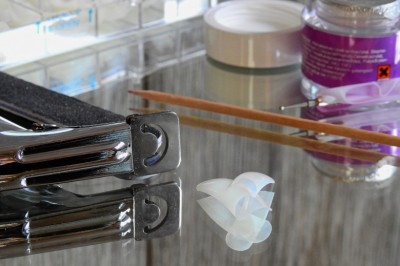How to Install an Egress Window Well
Step 1: Preview the Work Site There are many details to look for before properly installing an egress window well. Some key concerns you should look for include accessibility to the window and work site, obstacles in the way such as utility meters, landscaping, a/c, hills or fencing, water drainage, proximity to property lines, buried utilities in the area, load bearing walls, existing basement windows, basement ceiling height, size and hinge placement of window, and measurements of well, sill height and window position. Step 2: Select Window Type, Size, Color and Brand A wide variety of window types can be installed. Typically, a window style and color is chosen to match the other windows in the house. The most common choice is a single casement, although double hung or sliders can also be used. The key is to meet or exceed code requirements, so double and triple wide windows can also be installed. To easily meet escape area code requirements, most windows are 30" x 48". However, with customized hinging and if you can maintain the sill height requirement of 44" or less, the smallest casement style window that can be used is 29" wide by 41" tall. A glider window is 56" x 48". Step 3: Select Window Well Style, Size, Material, and Features Many options are available for the egress window well. Treated landscaping timbers work well and look fabulous. Landscaping blocks are also a good option. Most wells are required to have a ladder permanently affixed to the area well for safety. This can also be done with terracing or creating steps if space permits. Custom designs and materials are also an option. Remember, the window well is what you will see from the interior of your new room, so dont skimp here. All wells, when installed properly, can last a long time, even the wooden ones. The corrugated metal wells are sturdy, resist corrosion and are your best value for a simple code approved egress. Step 4: Dig, Dig, and Dig Some More Digging out the dirt for the area well is one of the most labor intensive steps in the process. The hole is over 5ft. wide, 3ft. out from the house, and 5-6ft. deep. Area wells made from wood, plastic, or landscape block require even more dirt to be removed. Very dry or very wet clay soil, roots, rocks, and utility lines like electrical, gas, cable TV, or water can slow the digging process. Please be sure to inform any egress window well professionals of other hidden hazards like old utility lines buried underground or other things you may have buried (for example, an electrical line running to a detached garage or gas line running to a BBQ grill). Holes are often dug by hand if there is a concern about hitting utility lines or if access to the area is too restrictive, otherwise a small backhoe with rubber tracks is used. Plywood is laid on the ground around the hole and to the street to move the backhoe around with minimal turf stress. Rule1: Never dig more than you have to and never move the dirt twice. Approximately 3 cubic yards of dirt is removed. Most professionals use a 7 ton capacity dump trailer to remove the dirt/fill from your property. In some situations, they may have a dumpster delivered and picked up, but would prefer to leave most on your property. They can put it anywhere you like and easily flatten it out. You might want to think about using this dirt to correct drainage problems around your foundation. Step 5: Assemble Egress Window Well You cant have dirt washing into your new window, so the earth is held back with a retaining wall. There are many styles and types available for your selection, including metal, vinyl, timber and block wells. The well is backfilled with dirt and the well filled with about 9"-18" of gravel. The loose gravel absorbs water and keeps plants from growing. Although one may plant a small garden on the terrace steps, if desired. Step 6: Setup Area for Cutting Foundation The basement wall is now ready to cut. A window does not have to go where you already have one. A window can be put wherever it works best for you. A plastic containment tent is made on the interior of the wall. This tent contains most of the saw dust and debris. One key to dust containment is to close up the house. A fan is used to draw the dust back outside. Step 7: Cut and Remove the Basement Wall Some professionals will use a gas powered partner saw with a 14" diamond blade, or something similar, to cut the block from both sides. This diamond bit blade spins 4000rpm and has a unique gyro effect. As you can imagine, a fair bit of dust is created with this saw. Thats why its a good idea to create a containment tent. See previous step. A wooden window frame is made to attach everything else to. No gaps may be left here. Vulken Titanium is used to completely seal it. Every gap is insulated with fiberglass and expansion foam. Step 8: Center, Plumb, Level, Insulate and Trim Window The window is installed using the built in nailing fin. It is double-checked for level and plumpness. A bead of vulken is added to get an extra good seal. It is shimmed so it does not move over time. Gaps are filled with fiberglass to keep the weather and bugs out. Trim is added around the window to make it all look pretty and set up a good seal. The trim can be cedar, brick mold or mortar. The trim is sealed against the block and window to prevent moisture damage and leaking. Step 9: Trim the Interior Window Wood is hand selected for the extension jambs and custom cut to fit the sill width. "Clear pine" is typically used for the trim, but any wood trim that matches the surrounding interior can be used. Oak and knotty pine are also commonly used. Make the trim as wide as you like. It will be ready for paint or stain. The wall is reinforced where the sheetrock or paneling was cut to prevent it from flopping around. The reinforcement also makes a strong nailer for the trim. Egress Window Guy. "How To Install an Egress Window the Right Way ." 2 Oct. 2009 [http://www.egresswindowguy.com/howto.html].
























